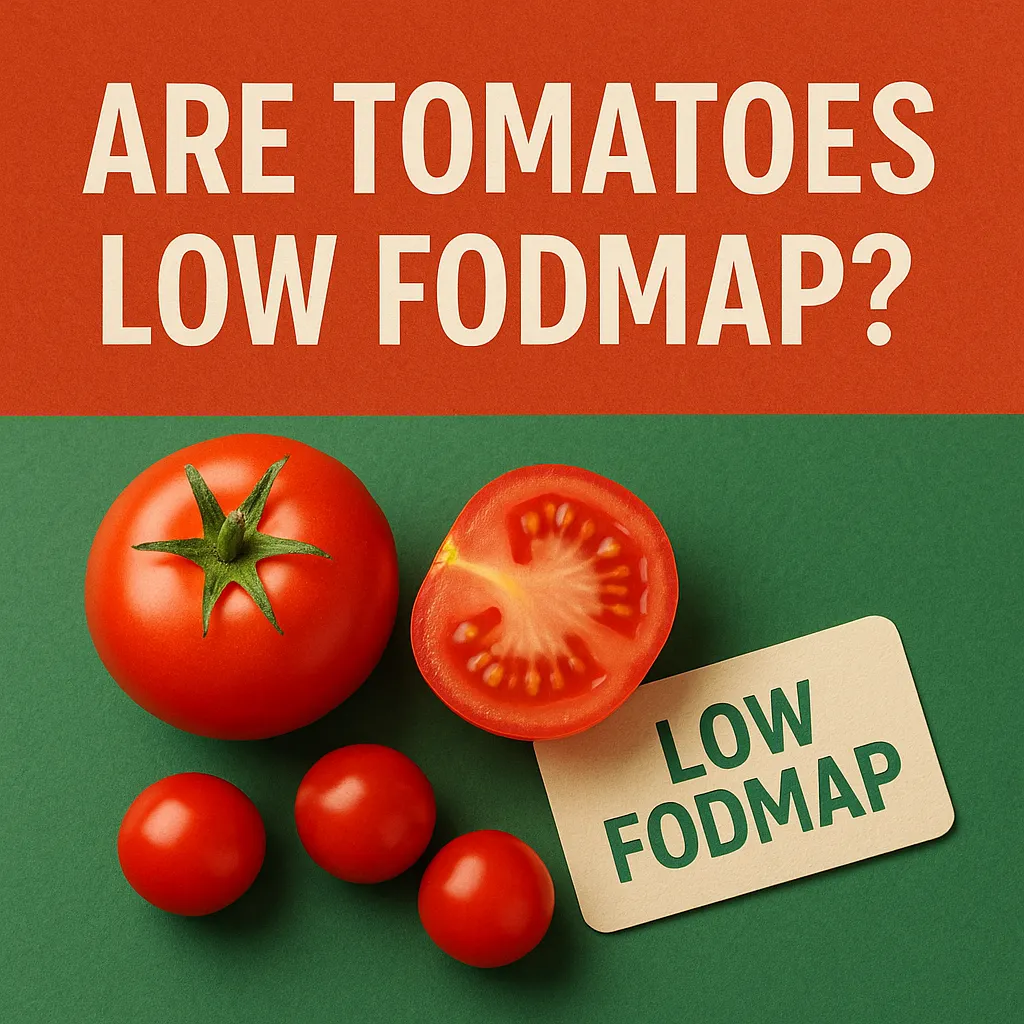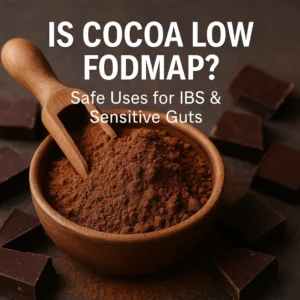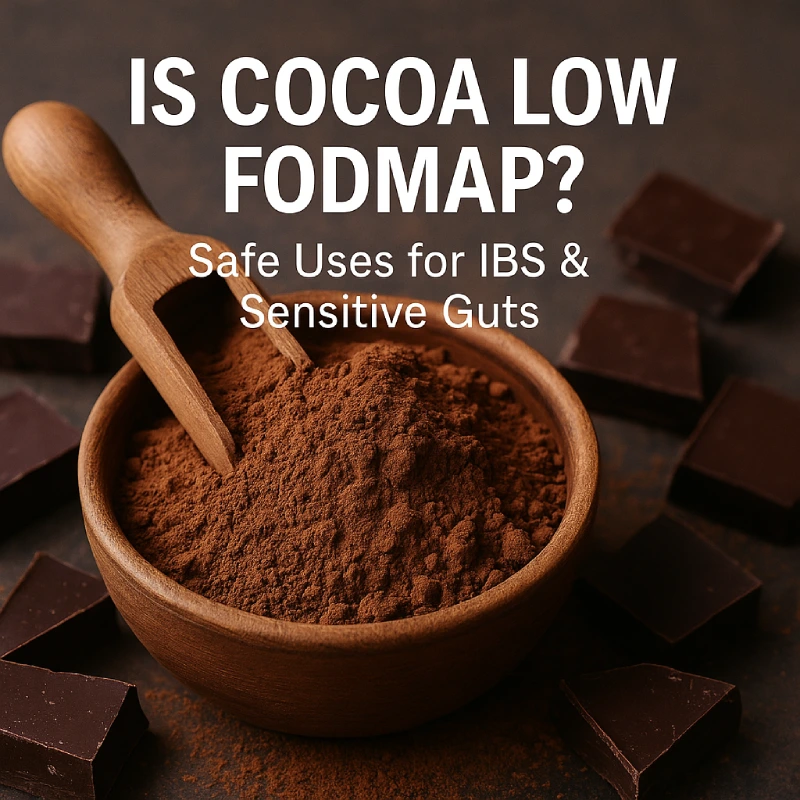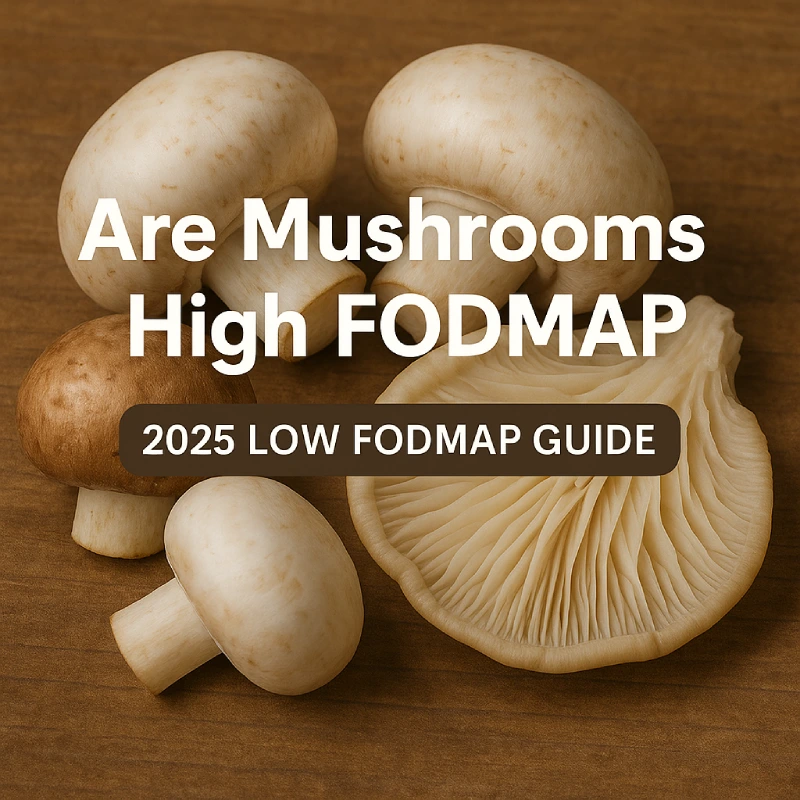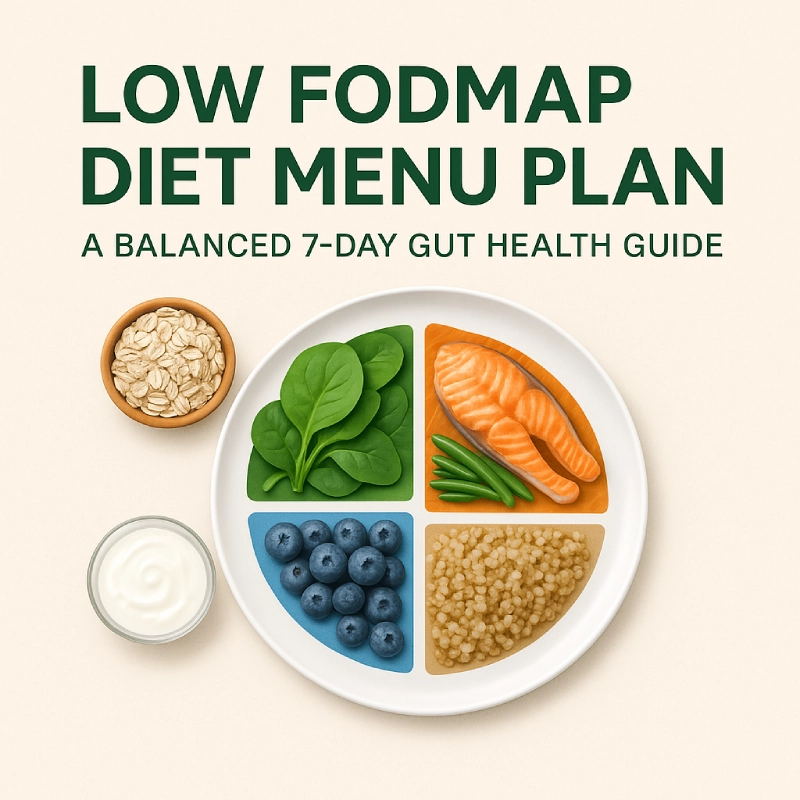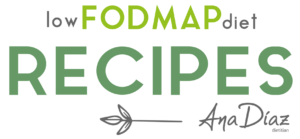Quick summary: Yes; many kinds of tomatoes are low FODMAP, but only in specific portions. The type of tomato, how ripe it is, and whether it’s fresh, canned, paste, or juice all make a difference. In this article, we’ll explore what Monash University’s research says, so you can enjoy tomatoes without worrying about triggering your gut.
Table of Contents
What does “low FODMAP” mean?
Before we get into tomatoes, let’s take a moment to revisit what “low FODMAP” actually means.
- FODMAPs are fermentable short-chain carbohydrates (oligosaccharides, disaccharides, monosaccharides, and polyols) that some people with irritable bowel syndrome (IBS) find difficult to digest.
- A food is considered “low FODMAP” if a standard serving contains only small amounts of these fermentable sugars. This means most people with IBS can tolerate it, especially during the elimination phase of the diet.
- Monash University regularly tests foods and updates their recommendations, using a traffic-light system (green = safe, amber = moderate, red = high).
How have tomatoes been tested?
Tomatoes were once thought to be freely allowed on a low FODMAP diet. However, Monash University’s more recent testing revealed that some types and portions do contain enough fructose to cause issues in larger amounts.
This means that while tomatoes are still very much part of a low FODMAP diet, portion sizes are important. Serving size can make the difference between a green light and an amber or red one.
Which tomatoes and tomato products are low FODMAP?
Here’s a clear overview of the tomato types and products that Monash University has tested, along with their safe serving sizes.
| Tomato / Tomato Product | Low FODMAP Serving | What happens if you exceed that |
|---|---|---|
| Common (round) raw tomato | ~ 65 g (about ½ medium tomato) | Larger serves contain moderate fructose |
| Roma / Plum tomato (raw) | ~ 48 g (about ⅔ small tomato) | Larger serves contain moderate fructose |
| Truss tomato (on the vine, raw) | ~ 69 g (about ½ medium) | Larger serves contain moderate fructose |
| Cherry tomatoes, raw | ~ 45 g (about 3 tomatoes) | 4 or more become moderate |
| Canned tomatoes (plain, no onion/garlic) | ~ 100 g (about ½ cup) | Larger serves contain moderate fructose |
| Canned Roma / Plum tomatoes | ~ 100 g (about ½ cup) | Larger serves contain moderate fructose |
| Tomato paste / concentrate | ~ 28 g (2 tablespoons) | Larger serves may contain fructans and fructose |
| Passata (tomato purée / sieved tomato) | ~ 72 g (about ¼ cup) | Larger serves become moderate |
| Tomato juice (100% pure) | ~ 96 g (about ½ glass) | Larger serves contain moderate fructose |
| Sundried tomatoes | ~ 8 g (about 2 pieces) | 4 pieces or more become moderate |
| Tomato sauce (plain, no onion/garlic) | ~ 16 g (about 2 sachets) | Larger serves may tip into moderate |
What influences tolerance to tomatoes?
Even within safe portion sizes, your personal reaction may vary. Here are some important factors:
Ripeness and variety
Ripe tomatoes tend to have higher sugar content, which can alter the glucose-to-fructose ratio. This means that very ripe tomatoes may be harder to tolerate than firmer ones. Different varieties (cherry, truss, plum) also contain slightly different sugar levels.
Processing and concentration
Tomato products like paste or sundried tomatoes are more concentrated, which increases FODMAP density. On the other hand, canned tomatoes with juice may be less concentrated and more tolerable in small serves.
Other ingredients
Many commercial tomato products contain onion, garlic, or high-fructose sweeteners, which significantly raise the FODMAP load. Always check ingredient lists carefully.
Your individual threshold
Even when tomatoes are rated low FODMAP, your own gut response matters most. If you notice symptoms after eating a “green-light” serve, it may be due to other compounds in tomatoes (like natural acids, seeds, or food chemicals such as salicylates and amines).
Practical tips for enjoying tomatoes
Tomatoes are a cornerstone of many cuisines, and it’s possible to keep them in your diet with some simple strategies:
- Measure portions at first, so you can learn what a safe serve looks like.
- Choose the right product for the dish; paste for depth of flavour, canned tomatoes for sauces, or fresh slices for salads.
- Cook creatively: build flavour with herbs, garlic-infused oils, and spices rather than relying on large amounts of tomato.
- Start small and observe. Keep a food journal and note not only what you eat but also how ripe the tomatoes are, or what other foods were in the same meal.
- Use tomato for flavour, not bulk. Even a spoonful of paste or a few cherry tomatoes can bring brightness to a meal.
When tomatoes may still cause discomfort
Even when eaten within the Monash guidelines, tomatoes can cause symptoms in some people because:
- They are naturally acidic, which may irritate sensitive stomachs.
- The skins and seeds can be rough on digestion for some individuals.
- Natural compounds like amines, glutamates, and salicylates can trigger non-FODMAP reactions.
- Combining tomatoes with other “moderate” foods in the same meal may push you past your personal threshold.
Bottom line: can you eat tomatoes on a low FODMAP diet?
Yes, most people can include tomatoes safely, as long as they stick to recommended serving sizes. The key is portion control, variety selection, and listening to your body.
Start with a green-light portion of fresh or canned tomato, see how you feel, and then adjust. Many people find that tomatoes can remain part of a gut-friendly, flavourful diet.
FAQs about Tomatoes and the Low FODMAP Diet
Are all tomato varieties tested by Monash University?
Not all, but several common types (including round, roma, truss, and cherry) have been tested. If you’re trying an untested variety, start with a small portion and see how your body responds.
Is ketchup or tomato sauce low FODMAP?
Small serves of plain tomato sauce (without onion or garlic) can be low FODMAP. However, portion sizes are limited, and many brands include high FODMAP ingredients, so always check the label.
Does cooking change the FODMAP content of tomatoes?
Cooking doesn’t remove FODMAPs, but it can affect texture and acidity. What matters most is the serving size and whether the tomato is fresh, canned, or concentrated.
Should I avoid tomatoes completely during the elimination phase?
Not necessarily. Many tomato products are safe in small, measured amounts. Eliminating them entirely isn’t usually required unless you know they personally trigger you.
A gentle next step
If tomatoes are one of your favourite foods, there’s no need to give them up completely. Start small, notice how you feel, and use Monash University’s guidance as your compass. With careful portioning, tomatoes can stay on your plate, and bring colour, flavour, and joy to your meals.

